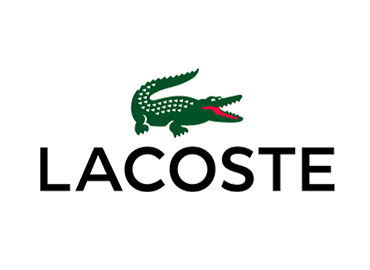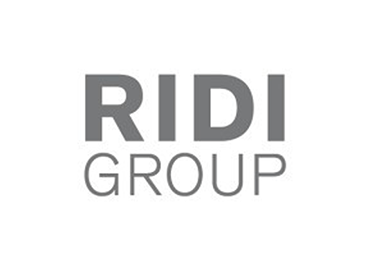- Home
- Product Lifecycle Management (PLM)
Take control of your product’s destiny with Contentserv’s Product Lifecycle Management software. Manage every stage of your product journey while enhancing collaboration and driving better business outcomes. With our PLM tool, your team can eliminate inefficiencies, improve time-to-market, and ensure consistent product quality.
Seamless journey — from concept to cart.
Centralize product data
Enable easy access and updates across all departments with a unified product lifecycle management system, ensuring consistency and accuracy at every stage.
Automate workflows
Minimize manual tasks and accelerate timelines with advanced workflow automation for faster, more efficient production processes.
Integrate with supply chains
Boost efficiency and adaptability by connecting seamlessly with supply chains to respond to market changes.
Boost profitability
Deliver high-quality products that drive customer loyalty and repeat business while reducing costs with a robust PLM solution.
customers now expect more personalized or customized products compared to three years ago
in research and development costs can be achieved through effective PLM implementation.
Begin your journey here.
What is a PLM software?
Product lifecycle management software is a powerful tool that streamlines every stage of a product’s lifecycle, from concept and design to production, distribution, and eventual retirement. By consolidating product data and processes in one place, PLM software fosters cross-department collaboration and enables faster, more informed decisions — empowering businesses to achieve operational excellence.
Reduce errors and waste
Identify and address product issues early with a comprehensive PLM solution. Lower costs and minimize manufacturing waste for an eco-friendly impact.
Speed time-to-market
Provide a single source of truth, enabling teams to manage timelines and accelerate product launches.
Produce higher-quality products
Inspire future enhancements by providing designers and engineers access to performance data and feedback.
Safeguard product integrity
Ensure top-tier product safety by proactively tracking compliance, enforcing quality standards, and spotting risks early in development.
Why is a Product Lifecycle Management (PLM) system important?
PLM software enhances efficiency by unifying teams across design, production, and marketing. By centralizing data, reducing errors, and ensuring compliance with quality standards, it enables businesses to launch products faster, improve profitability, and maintain a competitive edge.
From design to done: Contentserv's precise product delivery
Connect your product chain
Unify processes from concept to product commercialization, accelerating decision-making and improving workflow efficiency.
Master product records
Contentserv’s expertise in data management enables the creation of a Golden Record, providing the speed and flexibility essential for complex transformations and ensuring seamless, end-to-end product data harmony.
Unlock intelligent insights
Transform data into insights with an AI-powered ecosystem of advanced technologies, driving informed decisions and innovation.
Accelerate innovation and launch
Fuel a smarter innovation pipeline with high-value ideas, streamlining design, development, and new product introductions.
Design the perfect product with ease
Data-driven collaboration: Enable every stakeholder to access data seamlessly, fostering synchronized and automated processes across teams.
Smarter product decisions: Navigate product complexities and elevate data quality by making informed, data-backed decisions throughout development.
Unified product ecosystem: Integrate all product and process data, eliminating silos and ensuring accessible knowledge across systems.
AI-powered delivery: Automate the delivery of customized experiences using AI and ML for real-time, data-driven optimization.
What are the benefits of Product Lifecycle Management software?
Sketch to shelf, effortlessly.
Increase operational efficiency
Streamline end-to-end product management — from conception to product launch — improve team collaboration, and reduce time spent on manual tasks.
Enhance development performance
Enable seamless, bi-directional data flow for real-time knowledge-sharing and collaboration between engineering and development teams.
Improve product data accuracy
Centralize information to reduce errors and maintain data consistency across all product stages.
Refine project delivery
Leverage advanced workflow management to calculate product costs precisely and streamline the handover of new designs to manufacturing.
What are the phases of product development?
Shape your next product with PLM software
Create a positive product development experience with PLM's AI-enabled framework, powered by PIM for efficient product delivery.
Concept and design
In the ideation phase, product requirements are defined based on market analysis, competitor research, and customer needs.
Development
Detailed product designs, along with required tooling, are created, followed by validation and prototype testing in real-world scenarios. Feedback from this phase helps refine the product.
Production and launch
Insights from pilot testing inform final adjustments, preparing the product for mass production and market launch, followed by broad distribution.
Service and support
In the post-launch phase, ongoing service and support are provided to ensure customer satisfaction and product performance.
Retirement
As the product reaches the end of its lifecycle, it’s phased out or incorporated into new offerings, ensuring a smooth transition.
Seamlessly manage every product stage — from idea to market success.
What’s the difference between PIM and PLM?
While both Product Information Management (PIM) and Product Lifecycle Management (PLM) play key roles in product success, they address different parts of the product journey.
PIM is focused on managing the data required to market and sell a product across various channels. This includes descriptions, specifications, pricing, and multimedia assets that ensure consistent, compelling product representation.
A PLM software covers the full product lifecycle, from concept to disposal. It integrates people, data, processes, and systems, creating a backbone for managing design, production, and deployment stages to ensure products are developed and supported efficiently.
The right solution for your business or industry
How do PLM tools help?
Concept and design
Conceptualization
Align teams with product vision by capturing and sharing concepts with collaborative tools.
Market analysis
Centralize insights to make informed, data-backed design decisions that meet market needs.
Design and iterate
Store and update design files for easy access and efficient revision management.
Development
Version control and documentation
Document and track every version to keep specifications accurate and up-to-date.
Cross-functional collaboration
Connect teams across functions for seamless progress tracking and collaboration.
Compliance and validation
Monitor regulatory compliance and validate specifications to ensure product quality.
Production and launch
Automate task assignment
Assign tasks automatically to keep production schedules on track and organized.
Manage production timelines
Track progress and adjust timelines to ensure smooth transitions at every stage.
Quality control checks
Conduct quality checks at each milestone to guarantee a successful, compliant launch.
Services and support
Accurate product details
Provide support teams with accurate product details to enhance response times and accuracy.
Log and track product issues
Manage support requests in one place to streamline feedback and future updates.
Facilitate product updates
Organize upgrade documentation for efficient updates and effective customer communication.
Retirement
Initiate phase-out process
Plan product retirement by coordinating replacements or shutdowns with all relevant teams.
Archive product records
Archive product data securely for future reference and easy access.
Dispose and decommission assets
Coordinate asset disposal according to regulations for an organized and compliant phase-out.
Channels & integrations
Essential components of PLM software
Our PLM system streamlines processes, improves collaboration, and ensures consistent, accurate data across the product’s lifecycle, ultimately driving more efficient and effective product management.
-
Data and process management
-
Collaboration tools
-
Version control
-
Compliance and regulatory management
-
Product portfolio management
-
Analytics and reporting
-
Integration capabilities
-
Change management
Feedback & recognition from our community
ROTHENBERGER increases sales performance around the globe
“Contentserv and Parsionate immediately understood our requirements and proposed suitable solutions for our use case. We are pleased that in the future we will be able to maintain content much more easily and deliver it more efficiently across all marketing channels.”
Bastian Seib, Head of Product Data Management / Head of Marketing Technology, ROTHENBERGER
Control your product lifecycle with PIM
Frequently asked questions about PLM
What is a product lifecycle?
A product lifecycle is a product’s entire journey from its initial concept to its retirement from the market. It typically consists of several stages: concept and design, development, production and launch, service and support, and finally, retirement. Each stage involves different processes, from generating ideas and designing prototypes to full-scale production, market introduction, and, eventually, phasing out the product.
What are the stages of product lifecycle?
The product lifecycle consists of four key stages: Introduction, Growth, Maturity, and Decline. In the Introduction stage, a product is launched in the market, often accompanied by intensive marketing to build awareness and generate initial interest.
What does software for Product Lifecycle Management do?
A PLM solution oversees a product’s entire lifecycle, from initial concept through design, production, support, and retirement. It integrates people, data, processes, and business systems, creating a centralized hub where teams can manage and collaborate on all aspects of product development, ensuring efficiency, compliance, and consistency across departments.
Why should my company use a PLM solution for production?
Using a PLM tool for production provides a single source of truth, streamlining processes and enhancing collaboration across departments. A PLM solution improves product data accuracy, speeds up time-to-market, and reduces production costs by enabling teams to manage complex workflows, track changes, and ensure that every product meets quality and regulatory standards.
What is the difference between Product Lifecycle Management (PLM) and Product Data Management (PDM)?
While both PLM and PDM involve managing product-related data, they serve different purposes. PDM focuses primarily on organizing and controlling product design data, such as CAD files, to ensure version control. A PLM solution, however, encompasses the entire product lifecycle, integrating design, development, production, and support processes, making it a more comprehensive solution for managing products from concept to retirement.






